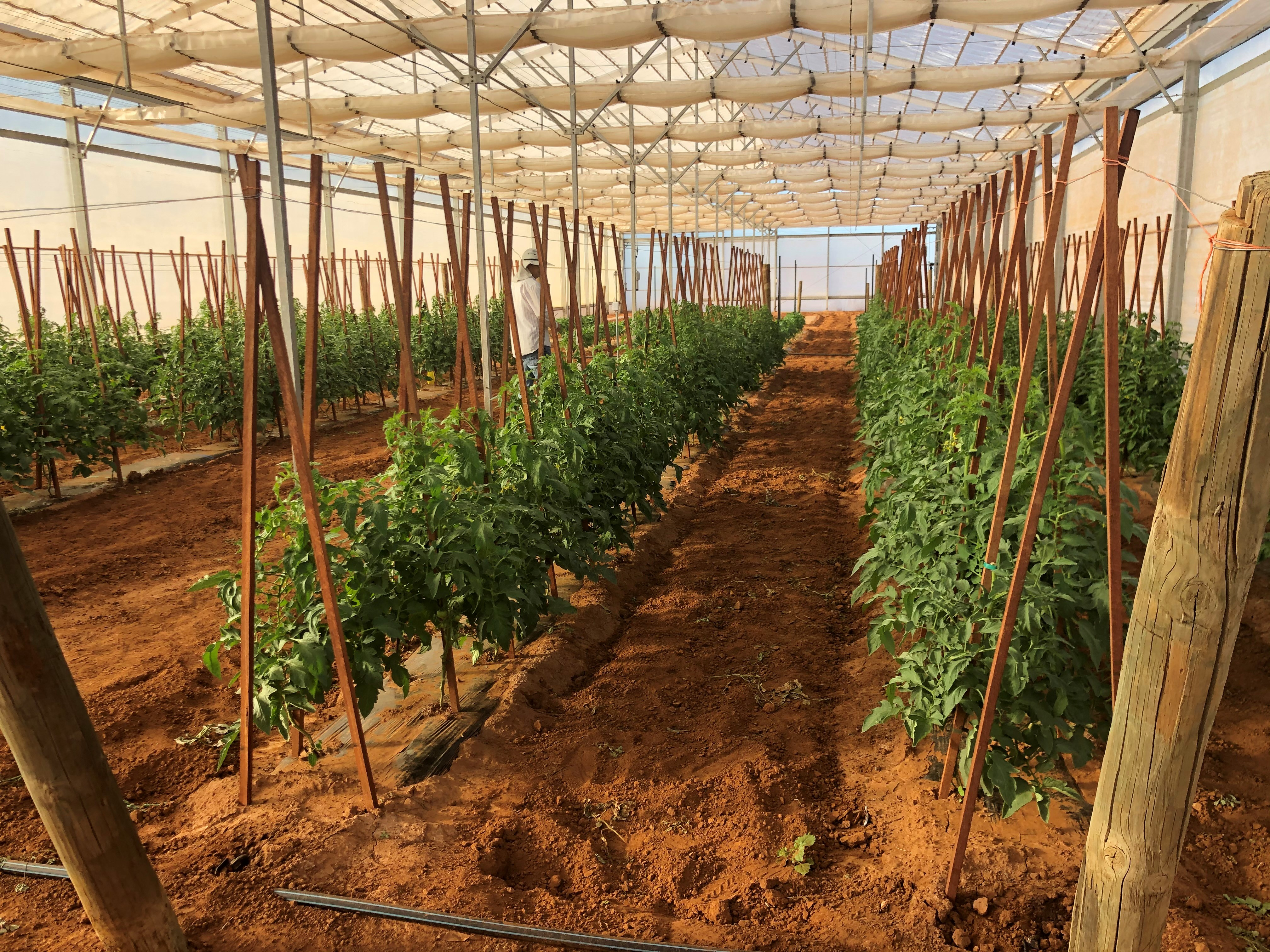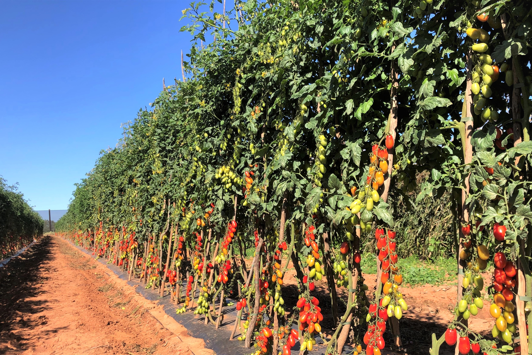The Carnarvon Research Station is situated in one of Western Australia’s major horticultural production areas. The Carnarvon horticultural district extends 20 km east of the town of Carnarvon (900 km north of Perth), along the fertile delta of the Gascoyne River.
Soils of the Carnarvon horticultural district have developed from alluvial sediments deposited on terraces that extend about one kilometre on either side of the Gascoyne River.
Irrigated agriculture has been undertaken in the area since the early 1900s. Originally based on bananas and vegetables, production has expanded to many tropical and temperate crops.
The irrigated horticultural area is one of the most productive in Western Australia, with an average annual horticultural production valued at over $110 million – with about two thirds coming from vegetable crops, and the remainder from fruit crops.
The Carnarvon Research Station covers 66 hectares, with 22 hectares of well drained, alkaline silty-loam sands, cleared and incorporated into field operations. The station is fully irrigated with two reliable, high-quality water sources, including water extracted from bores in the Gascoyne River and the local scheme. The station has the capacity to establish and manage research trials, bulk up cereal seed, and carry out disease screening.

Research
Research at the station includes examining how protected cropping systems can be used to optimise production of fruiting vegetables, and cucurbits, which are the main crops grown in the district. Production benefits of planting perennial crops including jackfruit and mangoes, at high density, are currently being investigated.
The station manages avocado, jojoba, date, dragon fruit and moringa germplasm for future research and development projects. Other research undertaken at the station, includes established mango variety trials, screening sterile forms of fodder shrub leucaena, cereal breeding lines, and varieties screening.
Facilities
The Carnarvon Research Station focuses on demonstrating new infrastructure, cropping systems, and resilient management practices for a changing climate.
- capacity to establish and manage small to large research trials and demonstration sites
- capacity to bulk up cereal seed and carry out disease screening for cereal breeding programs
- best-practice biosecurity management in place
- smart web-based technology being introduced to enable remote monitoring of weather and irrigation schedules
- isolated environment, which enables specialised field evaluation of plant pathology, and cereal phenotyping
- laboratories, chemical handling and storage facilities, machinery workshop, nursery, processing/packaging shed, and field plots
- protected cropping net house with fully automated irrigation/misting systems
- retractable roof greenhouse and fully automated fertigation, irrigation, and misting systems.
Collaborators
The Carnarvon Research Station hosts the Central Regional TAFE onsite, providing an agriculture training site to deliver certificates in Agriculture, Horticulture, Rural Operations, and Plant Production Systems, and training in machinery operations, chemical use practices, safety, and technology. Students have access to a suite of machinery and trials otherwise unavailable in a normal classroom setting.
History
In the early 1900s, Afghan camel drivers and Chinese labourers grew vegetables for their own use along the few waterholes close to the Carnarvon town.
Following World War I, many pastoralists began to purchase lots along the banks of the Gascoyne River to rest their stock during business or take rest breaks away from their inland pastoral properties. This led to many shallow bores in the river being developed, and vegetable and fruit growing increased.
Following World War II, many European migrants travelled north from Perth to the Gascoyne to grow commercial produce. Production grew quickly and was regularly sent to Perth by ship. Later, the introduction of refrigerated road transport saw the 5-day journey cut to two days. Paddocks were originally flood-irrigated, before technology and farming practices changed to include drip irrigation, spray irrigation, and other current systems.
Contact us
-
Carnarvon Research Station262 South River Rd
South Plantations WA 6701
Postal: PO Box 552
Carnarvon WA 6701

